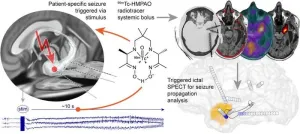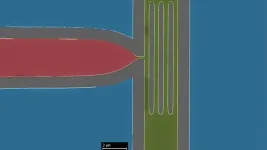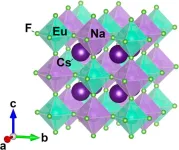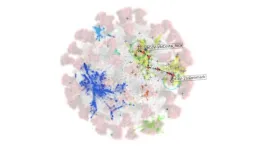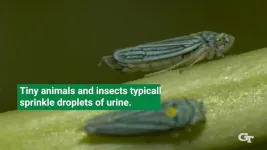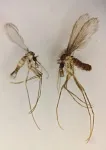(Press-News.org) Researchers have developed a new method for triggering and imaging seizures in epilepsy patients, offering physicians the ability to collect real-time data to tailor epilepsy surgery. In contrast to previous practice, where physicians from neurology and nuclear medicine had to wait for hours to days in hopes of capturing the onset of a seizure, the new method is convenient, spares resources, and is clinically feasible. This research was published in the March issue of The Journal of Nuclear Medicine.
People with epilepsy and seizures who do not respond to medication are often helped by brain surgery. The goal of the surgical procedure is to remove the epileptic brain tissue and spare the healthy brain tissue to control seizures but avoid neurological deficits. “Precisely delineating the epileptic brain tissue is essential for successful surgeries, and obtaining timely images of seizures may help formulate surgical plans with increased precision” said Sabry L. Barlatey, MD, PhD, resident in the Department of Neurosurgery at University Hospital of Bern in Bern, Switzerland.
The ictal SPECT method has been used since the 1990s as the sole neuro-imaging technique able to capture an image of an epileptic seizure propagating in the brain. However, due to the growing cost and time constraints in health care, most epilepsy centers abandoned this potentially informative technique.
“In this study, instead of waiting for spontaneous occurrences, we imaged planned seizures that were triggered with targeted electrical stimulation to the brain. To our knowledge, this simple idea had never been tested before,” noted Maxime O. Baud, MD, PhD, professor of neurology in the Department of Neurology at the University Hospital of Bern.
Three adult participants with left temporal epilepsy were included in the case study. Authors identified and used stereotactic electroencephalography (sEEG) leads in targeted cerebral areas to trigger patient-typical seizures. The radiotracer 99mTc-HMPAO was administered within 12 seconds of ictal onset and SPECT images were acquired within 40 minutes.
Seizures were successfully triggered in each participant, replicating the patient-typical seizure semiology and electrographic pattern on sEEG without any adverse events. Each triggered seizure was patient-specific, and the imaged early seizure propagation was unique. In the first two cases, ictal SPECT offered complementary information to sEEG and revealed early involvement of brain areas lacking electrode coverage. In the third case, sEEG and ictal SPECT provided overlapping information.
“The finding of this study is of practical nature, as it greatly facilitates the acquisition of the ictal SPECT,” noted Thomas Pyka, MD, Privatdozent in the Department of Nuclear Medicine at the University Hospital of Bern. “This may help obtain images of greater quality and could contribute to the refinement of resection planning, improving seizure and cognitive outcomes in epilepsy surgery.”
This study was made available online in January 2024.
The authors of “Triggered Seizures for Ictal SPECT Imaging: A Case Series and Feasibility Study” include Sabry L. Barlatey, Andreas Nowacki, Werner J. Z’Graggen, and Claudio Pollo, Department of Neurosurgery, University Hospital of Bern, Bern, Switzerland; Camille G. Mignardot, Cecilia Friedrichs-Maeder, Kaspar Schindler, and Maxime O. Baud, Sleep-Wake-Epilepsy Center and NeuroTec, Center for Experimental Neurology, Department of Neurology, University Hospital of Bern, Bern, Switzerland; Roland Wiest, Support Center for Advanced Neuroimaging, University Institute of Diagnostic and Interventional Neuroradiology, University Hospital of Bern, Bern, Switzerland; Matthias Haenggi, Department of Intensive Care Medicine, University Hospital of Bern, Bern, Switzerland; and Axel Rominger and Thomas Pyka, Department of Nuclear Medicine, University Hospital of Bern, Bern, Switzerland.
Visit the JNM website for the latest research, and follow our new Twitter and Facebook pages @JournalofNucMed or follow us on LinkedIn.
###
Please visit the SNMMI Media Center for more information about molecular imaging and precision imaging. To schedule an interview with the researchers, please contact Rebecca Maxey at (703) 652-6772 or rmaxey@snmmi.org.
About JNM and the Society of Nuclear Medicine and Molecular Imaging
The Journal of Nuclear Medicine (JNM) is the world’s leading nuclear medicine, molecular imaging and theranostics journal, accessed more than 16 million times each year by practitioners around the globe, providing them with the information they need to advance this rapidly expanding field. Current and past issues of The Journal of Nuclear Medicine can be found online at http://jnm.snmjournals.org.
JNM is published by the Society of Nuclear Medicine and Molecular Imaging (SNMMI), an international scientific and medical organization dedicated to advancing nuclear medicine and molecular imaging—precision medicine that allows diagnosis and treatment to be tailored to individual patients in order to achieve the best possible outcomes. For more information, visit www.snmmi.org.
END
Device could help facilitate the operation of new particle colliders, such as the Electron-Ion Collider.
In particle colliders that reveal the hidden secrets of the tiniest constituents of our universe, minute particles leave behind extremely faint electrical traces when they are generated in enormous collisions. Some detectors in these facilities use superconductivity — a phenomenon in which electricity is carried with zero resistance at low temperatures — to function.
For scientists to more accurately observe the behavior of these particles, these weak electrical signals, or currents, need ...
BUFFALO, NY- March 11, 2024 – Impact Journals publishes scholarly journals in the biomedical sciences with a focus on all areas of cancer and aging research. Aging is one of the most prominent journals published by Impact Journals.
Impact Journals will be participating as an exhibitor at the American Association for Cancer Research (AACR) Annual Meeting 2024 from April 5-10 at the San Diego Convention Center in San Diego, California. This year, the AACR meeting theme is “Inspiring Science • Fueling ...
BUFFALO, NY- March 11, 2024 – Impact Journals publishes scholarly journals in the biomedical sciences with a focus on all areas of cancer and aging research. Oncotarget is one of the most prominent journals published by Impact Journals.
Impact Journals will be participating as an exhibitor at the American Association for Cancer Research (AACR) Annual Meeting 2024 from April 5-10 at the San Diego Convention Center in San Diego, California. This year, the AACR meeting theme is “Inspiring Science • Fueling Progress • Revolutionizing Care.”
Visit booth #4159 at the AACR Annual Meeting 2024 to connect with members of ...
Embargoed for release until 5:00 p.m. ET on Monday 11 March 2024
Annals of Internal Medicine Tip Sheet
@Annalsofim
Below please find summaries of new articles that will be published in the next issue of Annals of Internal Medicine. The summaries are not intended to substitute for the full articles as a source of information. This information is under strict embargo and by taking it into possession, media representatives are committing to the terms of the embargo not only on their own behalf, but also ...
In the quest to develop quantum computers and networks, there are many components that are fundamentally different than those used today. Like a modern computer, each of these components has different constraints. However, it is currently unclear what materials can be used to construct those components for the transmission and storage of quantum information.
In new research published in the Journal of the American Chemical Society, University of Illinois Urbana Champaign materials science & engineering professor Daniel Shoemaker and graduate student Zachary Riedel ...
BOSTON – In the largest randomized clinical trial and first of its kind to date in the United States, a team led by investigators at Beth Israel Deaconess Medical Center (BIDMC) assessed the efficacy and safety of using a drug-coated balloon in patients undergoing coronary angioplasty. In an original investigation presented at the Cardiology Research Technology conference in Washington, D.C. and published simultaneously in JAMA, the team reports that patients treated with a balloon coated with paclitaxel, a drug to prevent restenosis, experienced lower rates of failure compared with patients treated with an uncoated balloon.
The findings of the trial—which ...
Some cancerous tumors hijack proteins that act as “brakes” on our immune system and use them to form a sort of shield against immune recognition. Immunotherapy treatments have been created that turn off these “brakes” and allow our body to attack foreign-looking cancer cells. To further advance such treatments, researchers at Stanford University and New York University have published a new structure of one of these brake proteins, LAG-3. Their work contains key details of the molecule’s structure, as well as information about how the LAG-3 protein functions.
Although over a dozen immunotherapies targeting LAG-3 are in development, and one is already FDA approved, ...
Scientists at The Universities of Manchester and Oxford have developed an AI framework that can identify and track new and concerning COVID-19 variants and could help with other infections in the future.
The framework combines dimension reduction techniques and a new explainable clustering algorithm called CLASSIX, developed by mathematicians at The University of Manchester. This enables the quick identification of groups of viral genomes that might present a risk in the future from huge volumes of data.
The study, presented this week ...
Cicadas are the soundtrack of summer, but their pee is more special than their music. Rather than sprinkling droplets, they emit jets of urine from their small frames. For years, Georgia Tech researchers have wanted to understand the cicada’s unique urination.
Saad Bhamla, an assistant professor in the School of Chemical and Biochemical Engineering, and his research group hoped for an opportunity to study a cicada’s fluid excretion. However, while cicadas are easily heard, they hide in trees, making them hard to observe. As such, seeing a cicada pee is an event. Bhamla’s team had only watched the process on YouTube.
Then, ...
Scientists have discovered the specific enzyme that a species of sandfly uses to produce a pheromone attractant, which could lead to the creation of targeted traps to control them and reduce the spread of the potentially fatal disease, Leishmaniasis.
The team from the University of Nottingham’s School of Chemistry analysed the genome of the Lutzomyia longipalpis, a species of sandfly native to Brazil and South America that can spread a disease called Leishmaniasis.
The study identified the enzyme, called a Terpene Synthase that is responsible ...
